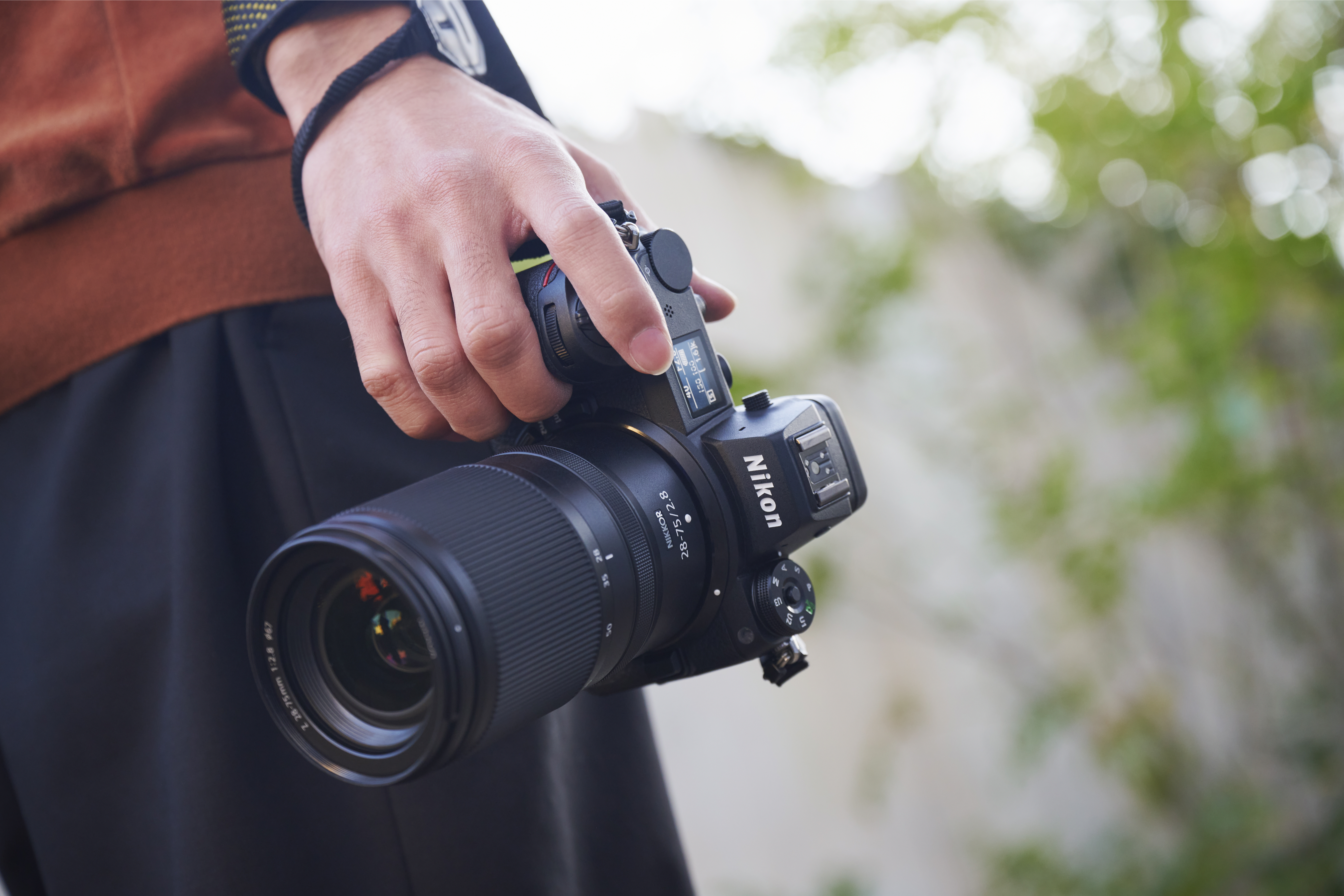If you look on the market, you’ll see that a few new zoom lenses have been popping up with constant f2.8 apertures. Sigma has a 28-70mm f2.8 that’s seriously lacking weather resistance. The new Tamron 28-75mm f2.8 G2 has a ton of weather resistance for under $1,000 — and received top marks from us. Now, Nikon has their own variant in the form of the new Nikon 28-75mm f2.8 Z. You should note that this isn’t one of Nikon’s S-series lenses, but if it’s anything like the company’s 40mm f2, then we’ll be surprised. At the same time, we wouldn’t call $1,199.95 affordable at all for this sort of lens.
You can view this article and much more with minimal ads in our brand new app for iOS, iPadOS, and Android.
Nikon 28-75mm f2.8 Z Tech Specs
The following specs were pulled from the press release for the Nikon 28-75mm f2.8 Z. We’ve added to it.
- The NIKKOR Z 28-75mm f/2.8 delivers incredible sharpness and a bright f/2.8 aperture, affording the ability to shoot in low light or produce images with a natural and pleasing bokeh.
- The lens weighs only 1.2 lbs oz (565g), which is 8.4 oz lighter than the NIKKOR Z 24-70mm f/2.8 S. In addition to its portability, the lens is well-suited for gimbal use for content creation and video productions.
- The minimum focus distance of 0.62ft (0.19m) allows users to capture intricate details.
- By employing a stepping motor (STM) with superior response, the lens quickly focuses on moving subjects during still-shooting or video recording. The extremely quiet STM greatly reduces the level of lens drive and operational sounds during focusing and video recording.
- With the control ring, users can focus manually or change ISO sensitivity, aperture and exposure compensation in stills and video. The smooth rotation enables precise focus control. The knurling employed improves operation.
- The lens is sealed to prevent dust and water droplets from entry, enabling use in everyday circumstances without worry.* It also features effective antifouling coating for easy cleaning.
- No image stabilization built in, but we’re not surprised at this. It makes sense.
- 3 inches by 4.8 inches
- 1 ED element, 3 aspherical elements, 1 Super ED lens element
- 67mm filter thread, and that means that it won’t be a super large lens.
- 9 Aperture blades
- 15 elements in 12 groups
- $1,199.95; which is affordable compared to their higher end 24-70mm f2.8.
How Will The Nikon 28-75mm f2.8 Z Perform?
Here’s where I’m very torn! Has Nikon improved a lot? Heck yes! But when it comes to lenses, there still isn’t a whole lot of innovation going on. We’d know — we recently updated our Nikon Z Lens guide and there’s a lot of similarity between them and other camera systems. The Nikon 14-30mm and 40mm f2 are some of their most unique lenses that we’ve reviewed so far, and we’ve reviewed the most! For the Nikon system, the Nikon 28-75mm f2.8 Z is a new lens. But it’s not enough to make me want to jump ship to the Nikon system. Couple this with much-improved autofocus that still lags behind the others, and I’m questioning this move.
If the Nikon 28-75mm f2.8 Z were offered as a kit lens option, then I think things could get a whole lot more fascinating.
So, without having the lens in for review, here are my predictions:
- Ergonomics: I’m sure it’s going to be very lightweight in the hand since it’s just over 1lb. The size isn’t all that huge either, but we’ll have to see when a lens hood is attached. The specs tell one story, but when a lens is attached to a camera, different things unfold.
- Build quality: Nikon tends to be very conservative about their weather sealing. I’m sure that it’s going to survive the rain just fine.
- Autofocus: Nikon’s autofocus is good. But it’s still behind Canon and Sony. We’ll see how this does.
- Image quality: Nikon’s image quality is, without question, always fantastic. So I’m sure we won’t have any faults here.
But then, this opens us up to the elephant in the room. This is nearly a $1,200 lens. I just spoke with Reviews Editor Hillary Grigonis, and we agreed that if it was under $1,000 then it would be a no-brainer purchase. But still, there’s nothing that would make me specifically move away from Sony considering Tamron’s super innovative 28-75mm.
This is a lens that we’re sure going to need to call in to see how it performs.













